What Is the Troposphere?

“The troposphere is the lowest layer of the atmosphere. It starts at ground level and extends upwards to an average of 13 km.”
Here are the main takeaways that you need to know about the troposphere:
- The troposphere is the layer we live in containing all the air that we breathe.
- All day-to-day weather occurs in the troposphere.
- 80% of atmosphere mass is in the troposphere and it’s mostly just nitrogen and oxygen.
- The troposphere is bounded by the tropopause. Then, the stratosphere is directly above it.
- Propeller aircrafts and conventional aviation fly in the troposphere for air traffic.
- Clouds form in the troposphere. But tall cumulonimbus can tower through the tropopause into the stratosphere.
Let’s examine the troposphere in a bit more detail.
What is the composition of the troposphere?
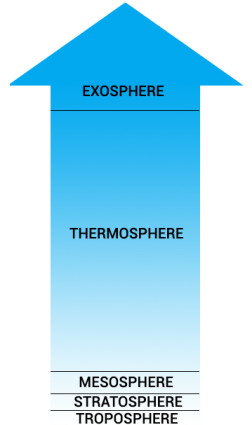
The troposphere is the densest layer of the atmosphere containing 80% of its mass. This is because all the other layers of the atmosphere sit on top of the troposphere compressing it.
The troposphere is mostly a mixture of just 2 gases. Nitrogen dominates 78% of the troposphere. Then, oxygen occupies 21%. For the remaining 1%, it’s mostly argon, carbon dioxide, and other trace gases that surround Earth.
Nearly all water vapor resides in the troposphere. But the proportion of water vapor in the troposphere decreases with altitude. This is why water vapor content is normally greatest near the surface of the Earth.
For aerosols, 99% exist in the troposphere. They trap heat, keeping the planet warm. But we don’t want it too hot. Whether it’s from agriculture, vehicles, or electricity production, these major sources of air pollution emit from the ground. Then, they move primarily to the troposphere and stratosphere.
Why does average altitude vary in the troposphere?
The average altitude of the troposphere is 13 km. This is slightly higher than Mount Everest. But it also depends on where you are on Earth and the season.
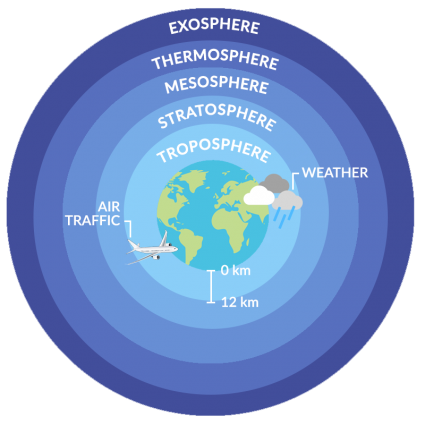
For example:
- TROPICS: The tropics have an average height of 18 km.
- MIDDLE LATITUDES: The troposphere in the middle latitudes has a mean altitude of 17 km.
- POLAR REGIONS: Polar regions have an altitude of about 6 km.
The atmosphere layer directly above the troposphere is the stratosphere. The tropopause marks the boundary between these layers.
Why does temperature decrease with height in the troposphere?
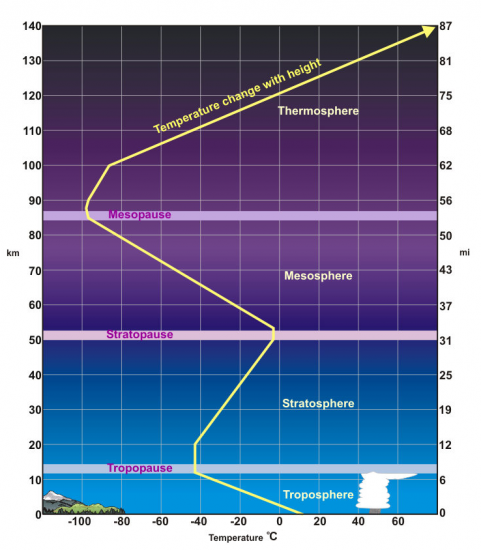
In general, temperature declines with height in the troposphere. Although variations do exist, energy transfers from the surface.
At ground level, the temperature is the warmest in the atmosphere. Then, heat moves upwards towards the layer above it.
The environmental lapse rate (ELR) measures how much temperature decreases with height. ELR is a simple calculation.
First, you take the difference in temperature from top to bottom of the troposphere. Then, you divide this temperature difference by height.
What is the tropopause?
In the troposphere, temperature decreases with height. This is because sunlight heats the Earth’s surface. Then, it cools upwards.
But in the stratosphere, temperature increases with height. The reason is that the stratosphere is filled with ozone. When the ozone layer soaks in light from the sun, it heats it.
“The tropopause has relatively constant air temperature. If you want to identify where the tropopause is located, you have to measure where the air temperature is relatively stable.”
Now, you have a positive lapse rate in the troposphere. But the lapse rate is negative in the stratosphere.
So this layer of inversion marks the tropopause where a layer of relatively warm air is above a colder one. Then, throughout the thickness of the tropopause, it’s relatively stable in temperature.
What are the air circulation patterns in the troposphere?
If you look at water vapor, 99% is found in the troposphere. This is why it’s the layer where most of Earth’s weather takes place.
Earth has a total of 6 convection cells:
- HADLEY CELLS: Hadley cells are from 0-30° latitude. For Hadley cells, the sun beams down at the damp and moist equator. Water evaporates and carries water vapor upwards. Then, the Hadley cell provides rain until about 30° latitude when it runs out of moisture.
- FERREL CELLS: Ferrel cells occupy 30-60°. At about 30° latitude, the air is much dryer. Then at 50-60°, it’s a subpolar low. In the Ferrel cell, air moves north at 30° latitude, then comes down at 60° north. Air is deflected from the Coriolis effect causing the Westerlies to move east to west.
- POLAR CELLS: Polar cells are from 60-90° latitude all the way to the North and South Poles.
In summary, these weather patterns dump rain into various environments across the globe. It’s in the troposphere which greatly influences moisture availability for floral and fauna.
What Is the Troposphere?
The troposphere is the lowest layer of the Earth’s atmosphere. It extends to about 20 km (12 miles) above the Earth’s surface.
The air pressure in this layer decreases as altitude increases. This causes the troposphere to have a significant influence on weather conditions.
The troposphere holds both natural and man-made pollutants which affect gas exchange between the atmosphere and oceans, acid rain, ozone depletion, and global warming.


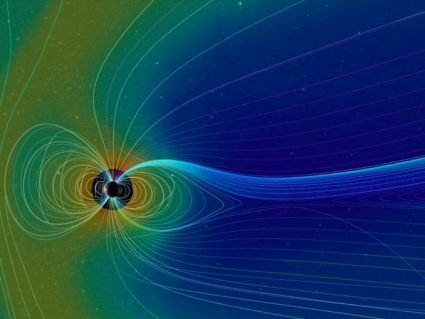
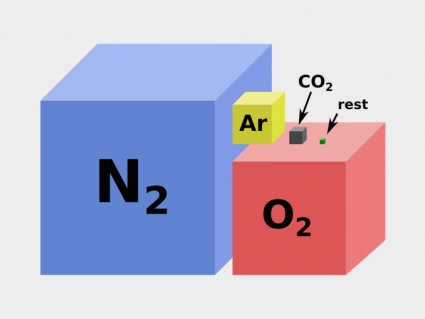
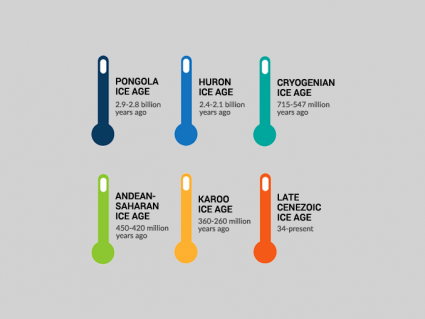


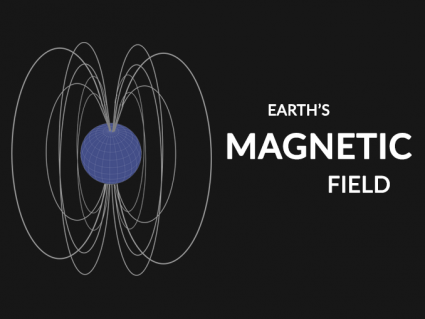


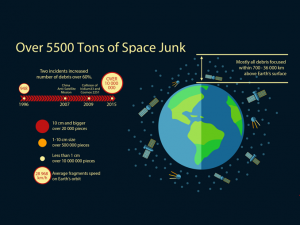
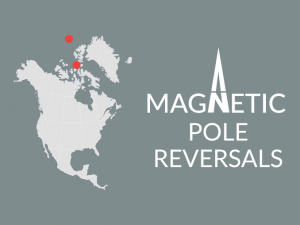

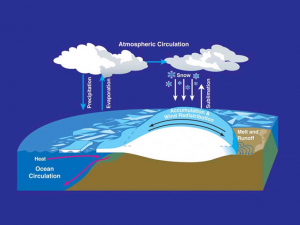

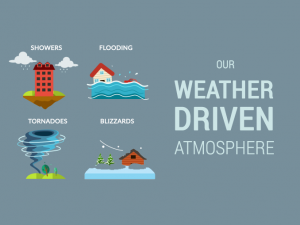
Informative